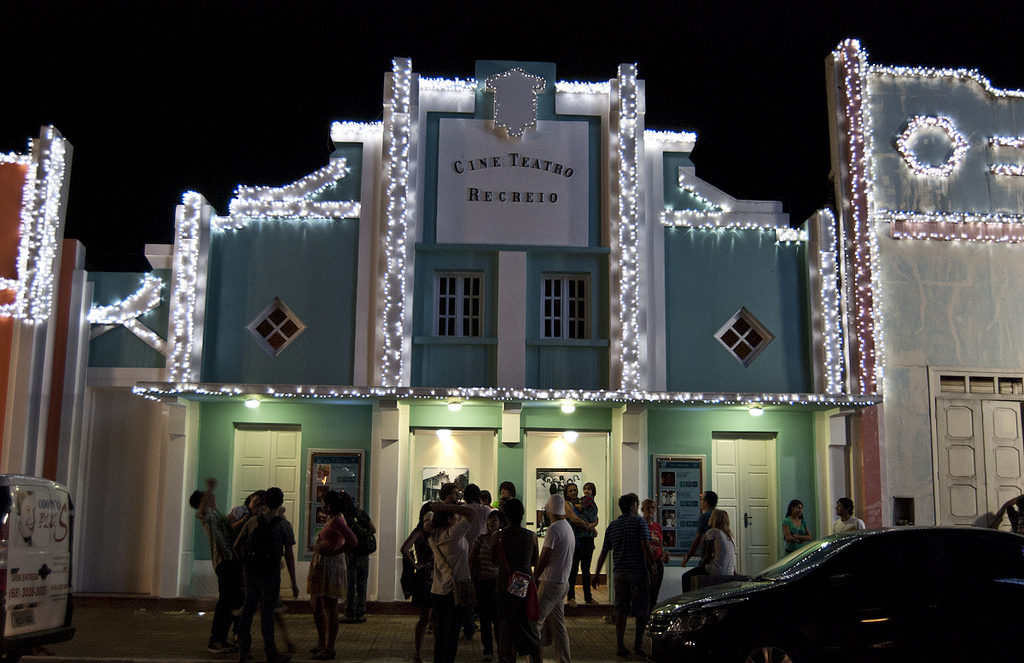
Cinema de Fronteira’s Pachamama International Film Festival. Photo by Talita Oliveira, licensed Creative Commons Attribution.
Cinema has always been very popular in Brazil. By the 1930s, even the smallest towns in the northeastern interior had their own modest movie palaces screening Hollywood flicks. In Rio, Praça Floriano became known as Cinelândia after the elegant downtown square was lined with sumptuous art deco movie palaces. Rio was also the birthplace of the Brazilian film industry. In 1930, Cinédia studios began churning out a series of popular romances and burlesque musical comedies known as chanchadas, some of which satirized Hollywood fare. A few of these films featured a very young Carmen Miranda, then at the height of her fame as a recording star. In 1964, the beginning of the military dictatorship caused cinema novo to experience a sudden demise. Government hard-liners censored any criticism of Brazil and forced many directors into exile.In the 1950s and ’60s, dreaming of a cinema novo (new cinema) and inspired by Italian neorealism directors such as Nelson Pereira dos Santos, Ruy Guerra, Anselmo Duarte, and Glauber Rocha took to making low-budget films, many shot on location in the arid Sertão, which highlighted the stark realities of the Brazilian Northeast in expressive black-and-white imagery. If not wildly popular at home, these films were a hit with international critics.In 1964, the beginning of the military dictatorship caused cinema novo to experience a sudden demise. Government hard-liners censored any criticism of Brazil and forced many directors into exile. Instead, in 1969 the government created Embrafilme, a state-run production company whose goal was to develop Brazilian filmmaking. Although censorship, bureaucracy, and favoritism severely limited artistic expression, Embrafilme did provide enough capital to maintain a small industry that funded the production of important films by major directors, such as Bruno Barreto’s Dona Flor e Seus Dois Maridos (Dona Flor and Her Two Husbands, 1976) and Cacá Diegues’s Bye Bye Brasil (1979).
The end of Brazil’s military dictatorship also meant the end of Embrafilme and a state-subsidized film industry. By the early 1990s only 3–4 Brazilian films were being released each year. Fortunately, things improved with the introduction of new incentive laws whereby private companies that invested in film productions would receive tax breaks. Eager to see their lives depicted onscreen, Brazilians flocked to the cinema in record numbers, despite the fact that, since the 1970s, more than two-thirds of movie theaters had been closed down, often converted into evangelical churches. Not only did the number of films produced gradually grow, but the quality was on par with the best of world cinema and was recognized as such by foreign critics, who showered awards on productions such as the Oscar-winning Central do Brasil (Central Station), directed by Walter Salles, and Fernando Meirelles’s Cidade de Deus (City of God, 2002), which took both Brazil and the world by storm with its brilliantly acted story of survival amid the gang warfare typical of a Carioca favela.
Excerpted from the First Edition of Moon Living Abroad in Brazil.